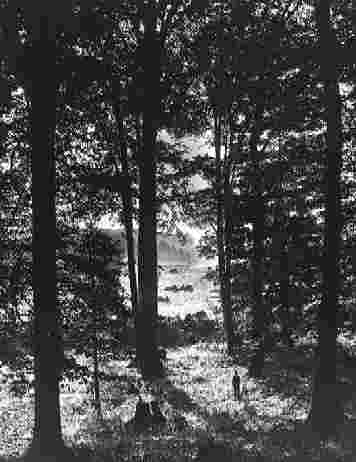
FAIR is a non-profit organization dedicated to providing well-documented answers to criticisms of the doctrine, practice, and history of The Church of Jesus Christ of Latter-day Saints.
MatthewBrown (talk | contribs) |
MatthewBrown (talk | contribs) |
||
| Line 76: | Line 76: | ||
#{{note|1832account}} {{PWJS|start=9|end=20}}{{link|url=http://deseretbook.com/personalwritings/4 Direct}} | #{{note|1832account}} {{PWJS|start=9|end=20}}{{link|url=http://deseretbook.com/personalwritings/4 Direct}} | ||
#{{note|lord5}}{{JoD21_1|author=John Taylor|title=The Revelation | #{{note|lord5}}{{JoD21_1|author=John Taylor|title=The Revelation of the Father and Son to Joseph Smith, and The Bestowal Upon Him of the Priesthood, etc.|date=4 January 1880|start=65}} (emphasis added)<!--Taylor10--> | ||
#{{note |lord2}} {{JoD19|author=John Taylor|title=Gathering | #{{note |lord2}} {{JoD19|author=John Taylor|title=Gathering the Result of Revelation, etc.|date=14 November 1877|start=151|end=152}} (emphasis added)<!--Taylor5--> | ||
#{{note |lord3}} {{JoD21|author=John Taylor|title=Eternal Nature | #{{note |lord3}} {{JoD21|author=John Taylor|title=Eternal Nature of the Gospel, etc.|date=28 November 1879|start=116|end=117}} (emphasis added)<!--Taylor8--> | ||
#{{note|lord4}} {{JoD21_1|author=John Taylor|title=Restoration | #{{note|lord4}} {{JoD21_1|author=John Taylor|title=Restoration of the Gospel Through Joseph Smith, etc.|date=7 December 1879|start=161}} (emphasis added)<!--Taylor9--> | ||
#{{ note |lord1}} John Taylor, Letter to the Editor of the ''Interpreter Anglais et Francois'', Boulogne-sur-mer (25 June 1850). (emphasis added) Reprinted in {{MS|author=John Taylor|article=|vol=12|num=15|date=1 August 1850|start=235|end=236}} <!--Taylor1--> | #{{ note |lord1}} John Taylor, Letter to the Editor of the ''Interpreter Anglais et Francois'', Boulogne-sur-mer (25 June 1850). (emphasis added) Reprinted in {{MS|author=John Taylor|article=|vol=12|num=15|date=1 August 1850|start=235|end=236}} <!--Taylor1--> | ||
#{{note|And1}} {{Ensign1|author=Richard L. Anderson|article=Parallel Prophets: Paul and Joseph Smith|date=April 1985|start=12}}{{link|url=http://library.lds.org/nxt/gateway.dll/Magazines/Ensign/1985.htm/ensign%20april%201985%20.htm/parallel%20prophets%20paul%20and%20joseph%20smith.htm?f=templates$fn=document-frame.htm$3.0$q=$x=$nc=6170}} | #{{note|And1}} {{Ensign1|author=Richard L. Anderson|article=Parallel Prophets: Paul and Joseph Smith|date=April 1985|start=12}}{{link|url=http://library.lds.org/nxt/gateway.dll/Magazines/Ensign/1985.htm/ensign%20april%201985%20.htm/parallel%20prophets%20paul%20and%20joseph%20smith.htm?f=templates$fn=document-frame.htm$3.0$q=$x=$nc=6170}} | ||
Joseph Smith gave several accounts of the First Vision. Critics charge that differences in the accounts show that he changed and embellished his story over time, and that he therefore didn't have any such vision.

Critics of the Church of Jesus Christ of Latter-day Saints often seek to point out differences between the various accounts which Joseph Smith gave of his First Vision. In defense of their position that the Prophet changed his story over a six year period (1832 to 1838) they claim that the earliest followers of Joseph Smith either didn’t know about the First Vision, or seem to have been confused about it.
Critics also complain that Joseph only had one heavenly visitor appear to him in the 1832 First Vision account.
The 1832 record reads:
One should first note that in the 1832 vision account, Jesus announces he will come "clothed in the glory of my Father." The Book of Mormon (translated three years earlier in 1829) also contains numerous passages which teach a physical separation and embodiment (even if only in spirit bodies, which are clearly not immaterial, but have shape, position, and form) of the members of the Godhead. (See: 3 Nephi 11, 1 Nephi 11꞉1-11, Ether 3꞉14-18.)
Furthermore, the Godhead was understood by Joseph and the early Saints to be decidedly different from the trinitarian model which later critics tried to impose upon him. (See here.)
It is important, too, to note that modern readers are accustomed to thinking of the title "Lord" as applying to Jesus Christ alone. However, it is clear that this is not how at least some Latter-day Saints used the title—it had a broader usage as well, which may confuse this passage for some.
John Taylor, whose words are examined extensively elsewhere, used the term "Lord" in a way that would be unusual for a modern member:
President Taylor here appears to use the term "the Lord," to include both the Father and the Son. And, this variant usage is no one-time slip—it was very common to Taylor. For example:
Here, the term "the Lord" applies to the Father, and not the Son!
This usage was reflected in at least two other sermons by Taylor:
And
Use of "The Lord" with both beings may also be seen in another account in which the Lord is addressed in prayer, and yet two personages arrive:
If John Taylor, one of the most educated and linguistically polished of Joseph's associates could use the term "Lord" in a variety of ways which do not match our modern usage, even well after Joseph's death and with LDS doctrine of deity well-established, then it may be asking too much to expect Joseph's relatively uneducated first attempt to record his story—in one breathless, run-on sentence—to make the clear distinctions which the critics demand.
Joseph's 1832 account focuses mostly on what he was told, and the telling was done by Jesus in all the accounts. But, Joseph's later explicit claim to have seen two personages may be present in his first account as well.
Regardless of the linguistic details, nothing in the 1832 account states that there was only one personage. If one announces a visit with the President of the United States, does this mean that the Vice President and First Lady were not present?
Paul the apostle gave several accounts of his vision of the resurrected Lord while on the road to Damascus. Like Joseph Smith's account of the First Vision, Paul's accounts differ in some details but agree in the overall message. Richard Lloyd Anderson made the following comparisons.
Joseph's varied accounts of the First Vision were targeted at different audiences, and had different purposes. However, they show a remarkable harmony. Evidence of how Joseph Smith and others understood the doctrine of God early in Church history demonstrates that the supposed 'evidence' for Joseph altering his story later is only in the eyes of critical beholders.

FAIR is a non-profit organization dedicated to providing well-documented answers to criticisms of the doctrine, practice, and history of The Church of Jesus Christ of Latter-day Saints.
We are a volunteer organization. We invite you to give back.
Donate Now